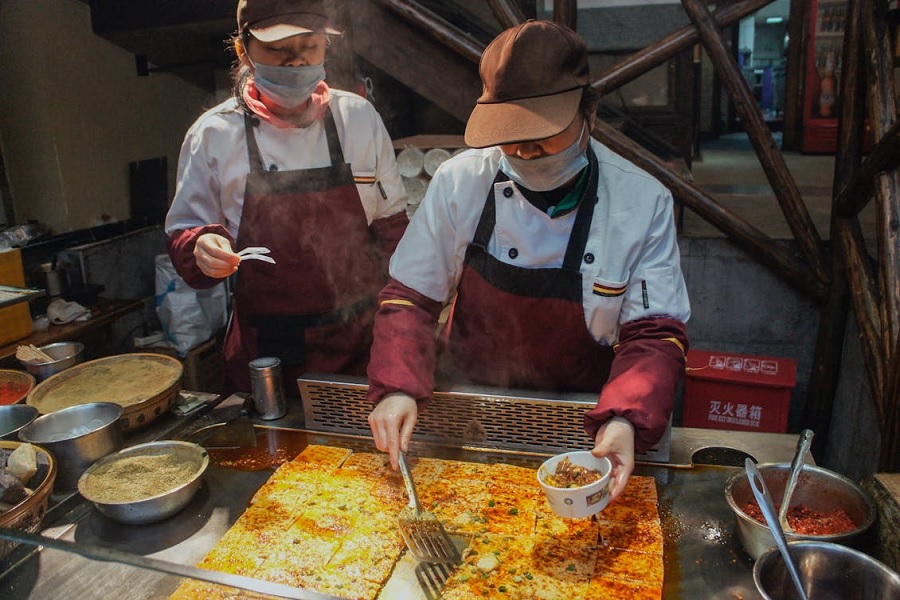Savoring Culture: The Flavorful World of Food and Beverage Tourism

Food as a Gateway to Culture
Food and beverage tourism, also known as culinary tourism, is rapidly growing as travelers increasingly seek authentic experiences. Rather than sticking to familiar chain restaurants, tourists are diving into local street food scenes, regional specialties, and time-honored cooking techniques. In this image, the skilled preparation of a local dish represents the culinary traditions passed down through generations, offering visitors not only nourishment but also insight into the region’s history and way of life.
The Street Food Experience
Street food plays a powerful role in the food tourism experience. It's fast, fresh, affordable, and deeply rooted in local identity. From aromatic broths to spicy stir-fried delights, these dishes are often made right in front of the customer, creating an interactive and immersive experience. The scene here shows two cooks, fully engaged and focused, their movements synchronized in a dance of flavor and precision—an art form in itself.
Supporting Local Economies
One of the core benefits of food tourism is the direct support it gives to local businesses. Small vendors, farmers, and traditional cooks are the backbone of this industry. When tourists choose to eat locally, they contribute to sustainable tourism by investing directly in the community. The bustling market stalls, the handmade recipes, and the locally sourced ingredients all create a cycle that supports economic and cultural sustainability.
A Sensory Journey
Culinary tourism is not just about taste—it's about sight, smell, sound, and touch. Watching dishes being prepared on a hot grill, hearing the sizzle and chatter, and catching the fragrance of spices all add layers to the travel experience. In the image, the vivid colors, rich textures, and steamy atmosphere draw travelers in, making it clear that food is a powerful storyteller.
Culinary Curiosity and Connection
For travelers, exploring new cuisines builds bridges of understanding. Food becomes a language of its own, one that transcends borders and invites connection. Whether you're trying a dish for the first time or watching it being made by someone who has perfected it over decades, you're participating in a cultural exchange that’s both personal and memorable.
























